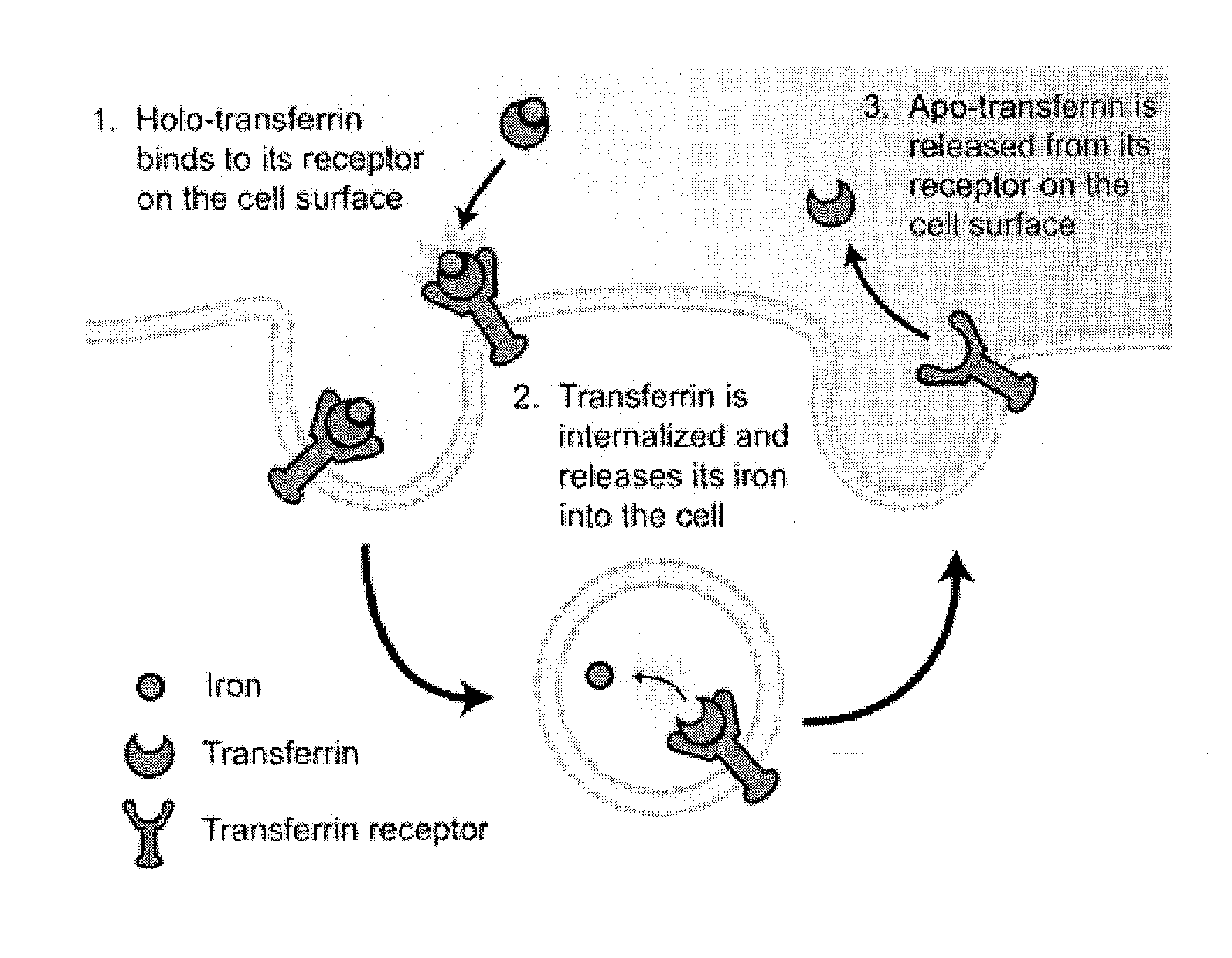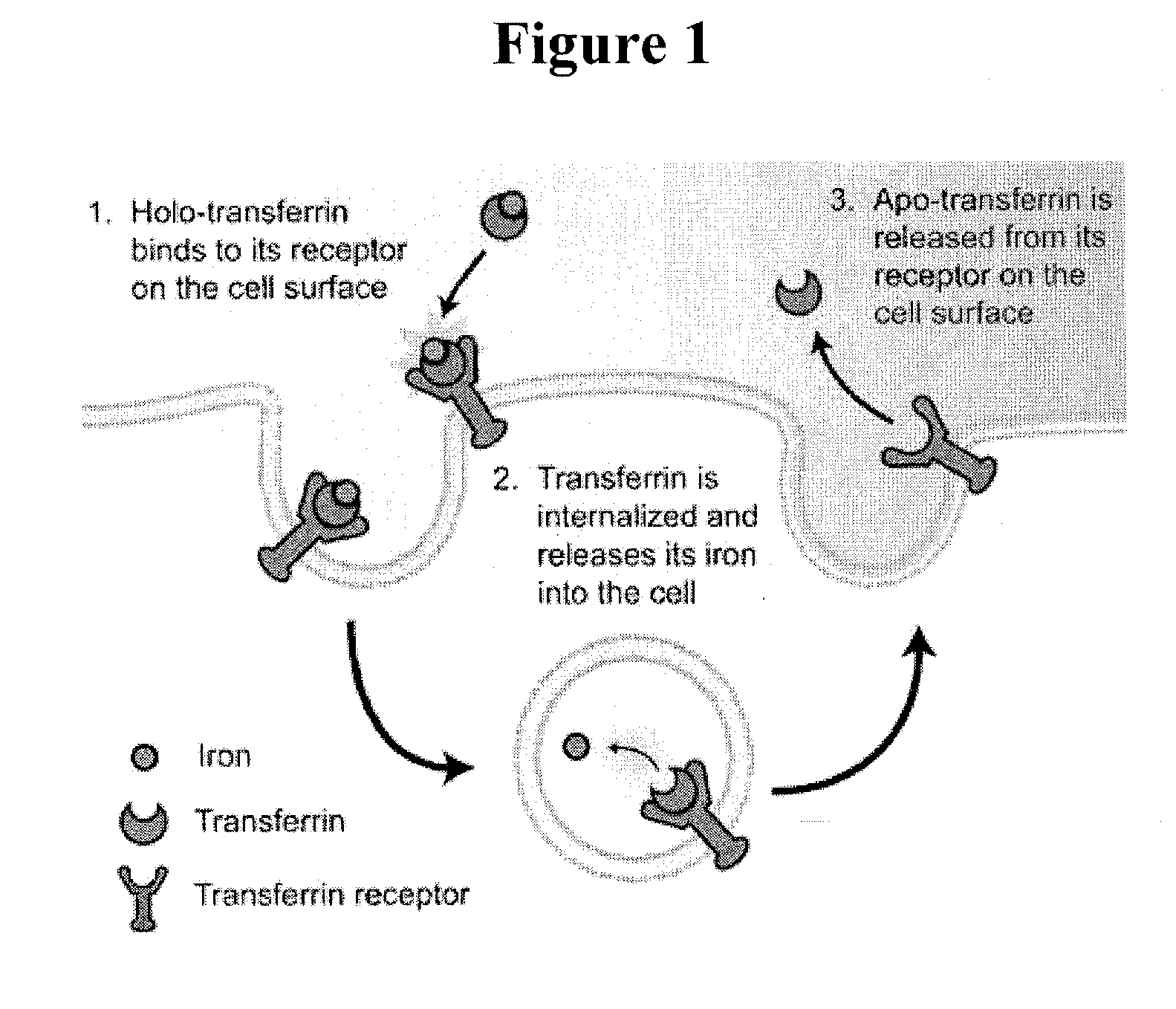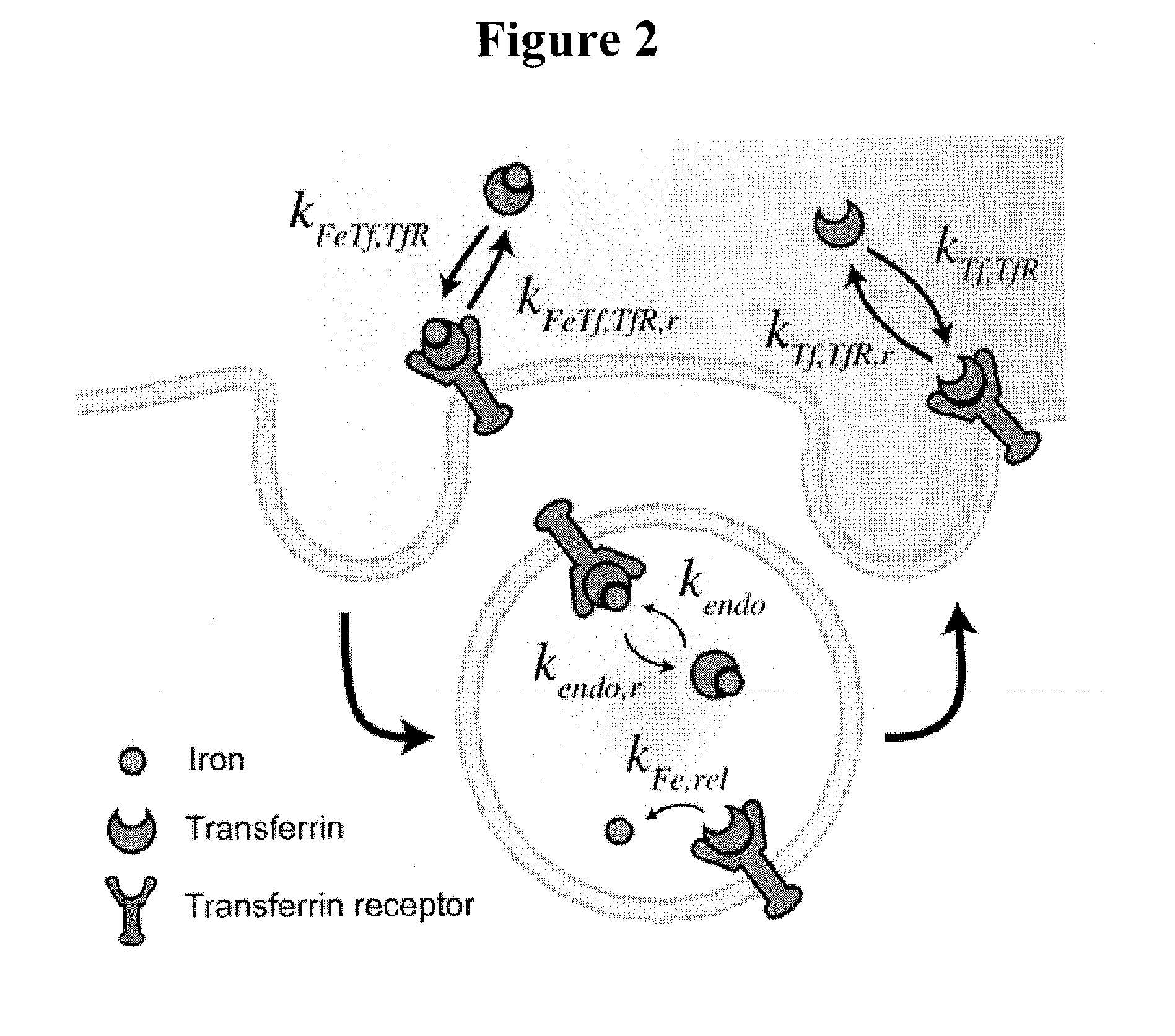Cancer drug delivery using modified transferrin
a transferrin and cancer technology, applied in the direction of transferrins, extracellular fluid disorders, peptide/protein ingredients, etc., can solve the problems of significant non-specific cellular association, significant limit the efficiency of the drug carrier, and inflammation to the death of the patient, so as to increase the cellular internalization, and increase the cellular association
- Summary
- Abstract
- Description
- Claims
- Application Information
AI Technical Summary
Problems solved by technology
Method used
Image
Examples
example 1
[0174]This example demonstrates suitable methods and results for testing whether a transferrin protein with reduced iron release kinetics demonstrates increased cellular internalization.
[0175]The role of iron release inhibition as a method of improving the drug carrier efficacy of transferrin (Tf) was examined for recombinant Tf mutants with varying degrees of iron release inhibition. Three different mutational variants of a recombinant form of Tf, otherwise known as N-His hTf NG were examined for increased cellular internalization. Compared to native Tf, N-His hTf NG is tagged at its N-terminus with a string of six histidine residues, and the normal glycosylation pattern found in the native protein is absent.
[0176]To show that oxalate substitution had the same effect on cellular internalization for the recombinant Tf as seen previously, cellular trafficking experiments were performed using N-His hTf NG and its oxalate counterpart at a 1 nM concentration with HeLa cells (FIG. 14). C...
example 2
[0179]This example illustrates intratumoral therapy of mice with established human gliomas.
[0180]In a protocol adapted from Laske et al., J Neurosurg (1994) 80:520-526, U87:EGFRvIII malignant gliomas were generated in the flanks of 4-6 week old nu / nu female nude mice. The mice were randomized mice and treated with one of our Tf-DT conjugates or PBS control. Tumor diameters were between 0.5 and 1.0 cm. A total of four injections (1 every 2 days) were given to each mouse followed by measurements of tumor size / weight every 2 days. Each injection contained a bolus amount of 0.25 μg Tf-DT conjugate in a volume of 100 μl. The Mice were sacrificed if they were moribund or lost 15% of their body weight. The results are shown in FIGS. 16 and 17. In the PBS treated control group, mice exhibited growth in tumor volume. In the native Tf-DT treated group, mice exhibited a delayed growth in tumor volume compared to the control. In both mutant Tf-DT treated groups, all mice exhibited a decrease in...
example 3
[0181]This example illustrates the conjugation of transferrin to polystyrene nanoparticles.
[0182]Polystyrene nanoparticles (PSNP) (100 nm diameter) were purchased from Phosphorex, Inc. (Fall River, Mass.). These PSNP were modified to have free surface amines and encapsulated fluorescein isothiocyanate (FITC). Apo-trasferrin (apo-Tf) was purchased from Sigma-Aldrich (St. Louis, Mo.). 2-iminothiolane (IT; Pierce, Rockford, Ill.) and N-succinimidyl 3-[2-pyridyldithio]-propionate (SPDP; Pierce) were used as crosslinkers for conjugating Tf to PSNP. To thiolate Tf, 1 mg of Tf was dissolved in 100 mM borate buffer (pH 8.0). The same molar amount of IT was then added to the Tf solution to yield a 1:1 molar ratio between IT and Tf. The mixture was incubated for 60 min at room temperature. Free IT was removed by centrifugation through Zeba desalt spin columns (Pierce) in acetate buffer (pH 5.5). 0.85 mg PSNP were mixed with 1 ml ddH2O to form a PSNP solution. Excess SPDP (5000:1 SPDP:PSNP) wa...
PUM
| Property | Measurement | Unit |
|---|---|---|
| pKa | aaaaa | aaaaa |
| pH | aaaaa | aaaaa |
| pH | aaaaa | aaaaa |
Abstract
Description
Claims
Application Information
 Login to View More
Login to View More - R&D
- Intellectual Property
- Life Sciences
- Materials
- Tech Scout
- Unparalleled Data Quality
- Higher Quality Content
- 60% Fewer Hallucinations
Browse by: Latest US Patents, China's latest patents, Technical Efficacy Thesaurus, Application Domain, Technology Topic, Popular Technical Reports.
© 2025 PatSnap. All rights reserved.Legal|Privacy policy|Modern Slavery Act Transparency Statement|Sitemap|About US| Contact US: help@patsnap.com



